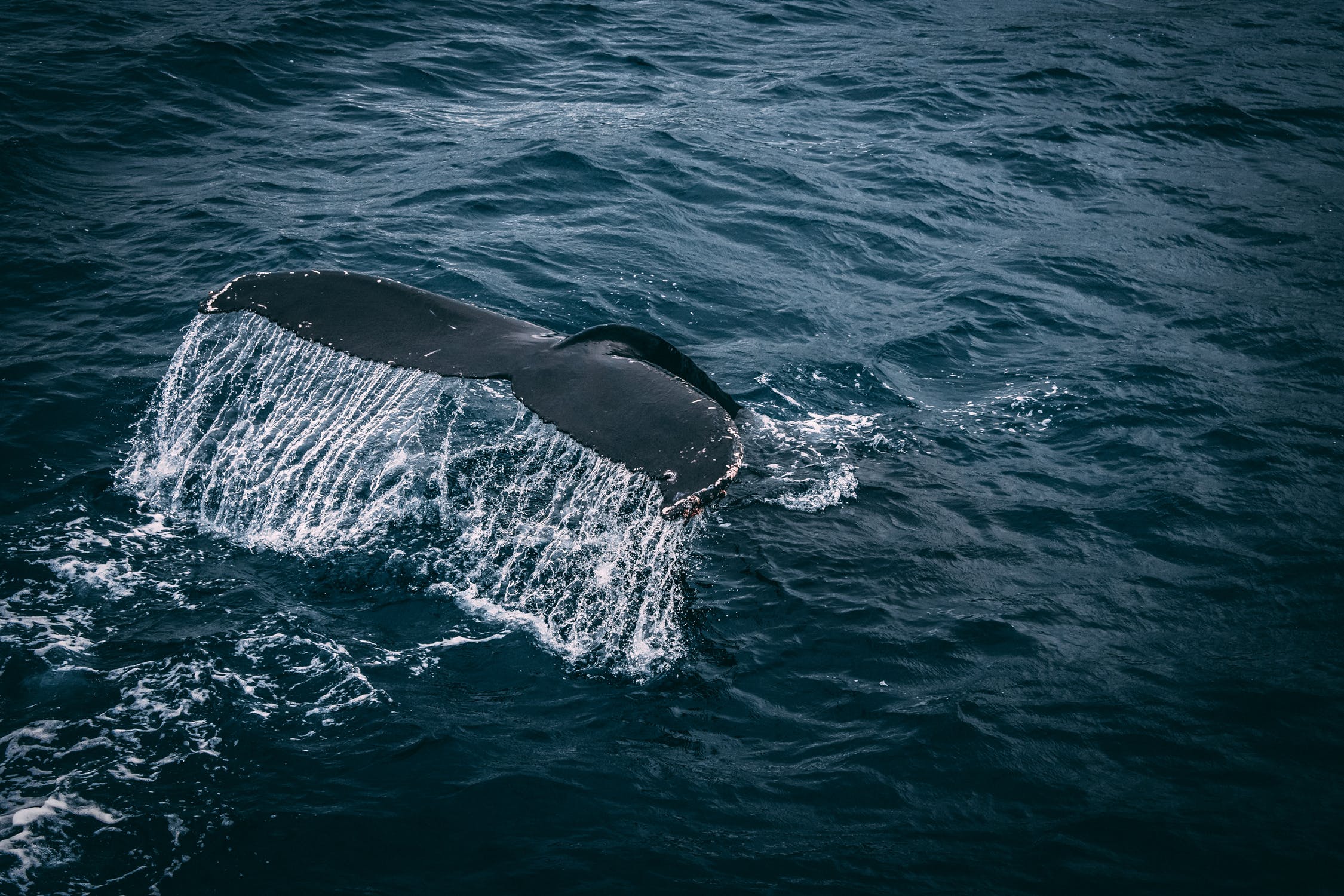When it comes to holding down the concentrations of atmospheric carbon, I'm willing to consider all sorts of possibilities, but I confess I had never considered whales. Ralph Chami, Thomas Cosimano, Connel Fullenkamp, and Sena Oztosun have written "Nature’s Solution to Climate Change: A strategy to protect whales can limit greenhouse gases and global warming" (Finance & Development, September 2019, related podcast is here).
Here's how they describe the "whale pump" and the "whale conveyor belt":
Wherever whales, the largest living things on earth, are found, so are populations of some of the smallest, phytoplankton. These microscopic creatures not only contribute at least 50 percent of all oxygen to our atmosphere, they do so by capturing about 37 billion metric tons of CO2, an estimated 40 percent of all CO2 produced. To put things in perspective, we calculate that this is equivalent to the amount of CO2 captured by 1.70 trillion trees—four Amazon forests’ worth ... More phytoplankton means more carbon capture.In recent years, scientists have discovered that whales have a multiplier effect of increasing phytoplankton production wherever they go. How? It turns out that whales’ waste products contain exactly the substances—notably iron and nitrogen—phytoplankton need to grow. Whales bring minerals up to the ocean surface through their vertical movement, called the “whale pump,” and through their migration across oceans, called the “whale conveyor belt.” Preliminary modeling and estimates indicate that this fertilizing activity adds significantly to phytoplankton growth in the areas whales frequent. ...
What's the potential effect if whales and their environment was protected, so the total number of whales increased?
If whales were allowed to return to their pre-whaling number of 4 to 5 million—from slightly more than 1.3 million today—it could add significantly to the amount of phytoplankton in the oceans and to the carbon they capture each year. At a minimum, even a 1 percent increase in phytoplankton productivity thanks to whale activity would capture hundreds of millions of tons of additional CO2 a year, equivalent to the sudden appearance of 2 billion mature trees. ...
We estimate the value of an average great whale by determining today’s value of the carbon sequestered by a whale over its lifetime, using scientific estimates of the amount whales contribute to carbon sequestration, the market price of carbon dioxide, and the financial technique of discounting. To this, we also add today’s value of the whale’s other economic contributions, such as fishery enhancement and ecotourism, over its lifetime. Our conservative estimates put the value of the average great whale, based on its various activities, at more than $2 million, and easily over $1 trillion for the current stock of great whales. ...
I'll leave for another day the question of what international rules or cross-country payments might be needed to help whale populations rebuild. I'll also leave for another day the nagging thought from the that cold rational section in the back of my brain that if a substantial increase in phytoplankton is a useful way to hold down atmospheric carbon, whales are surely not the only way to accomplish this goal. But it's a useful reminder that limiting the rise of carbon concentrations in the atmosphere is an issue that can be addressed from many directions.
A version of this article first appeared on Conversable Economist.



Leave your comments
Post comment as a guest